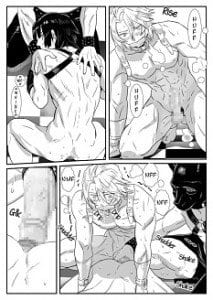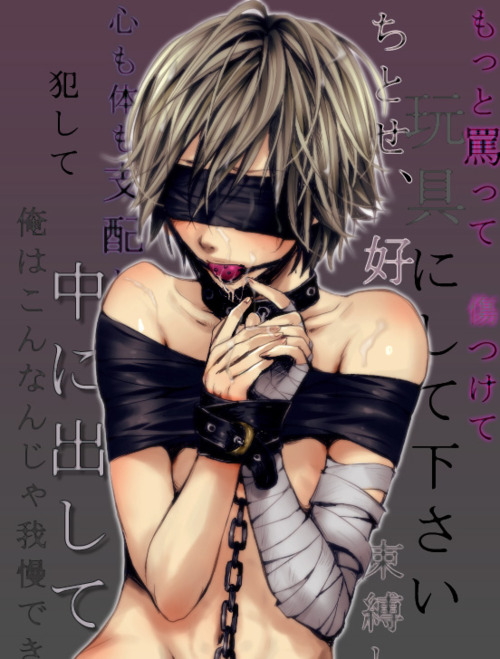
Yaoi Bdsm Free With A
An example of yaoi-inspired artwork. The best place to read the updated latest, greatest, best-quality. Read english manga online free with a huge collections at Manga Owl, update fastest, most full, synthesized, translate free with high-quality images. Read Magi, Onepunchman, Onepanman Onepunch-Man, Naruto, Boruto, Fairy Tail, One Piece, Tokyo Ghoul:re, Attack on Titan, Shingeki no Kyojin, Shokugeki no Soma manga online free.
It is typically created by women for women and is distinct from homoerotic media marketed to gay men. Soul yaoi soul eater yaoi porn gallery cartoonboner.Yaoi (/ j a i / Japanese: ), also known by the wasei-eigo construction boys love ( , bizu rabu) and its abbreviation BL (, beru), is a genre of fictional media originating in Japan that features homoerotic relationships between male characters. Anime pixxx yaoi magi anime yaoi porn magi anime yaoi porn magi anime yaoi.
Several terms were used for the new genre, including shōnen-ai ( 少年愛, lit. The genre originated in the 1970s as a subgenre of shōjo manga, or comics for girls. Portrayal of BDSM in comics is usually confined to adult publications and erotica, though. "Boys' love" and "BL" are the generic terms for this kind of media in Japan and much of Asia though the terms are used by some fans and commentators in the West, yaoi remains more generally prevalent in English.A type of sexual practice that involves bondage, discipline, sadism, and masochism (hence the acronym). It spans a wide range of media, including manga, anime, drama CDs, novels, video games, television series, films, and fan works. It is typically created by women for women and is distinct from homoerotic media marketed to gay men, but it does also attract a male audience and can be produced by male creators.
A defining characteristic of yaoi is the practice of pairing characters in relationships according to the roles of seme, the sexual top or active pursuer, and uke, the sexual bottom or passive pursued. "Boys' love" was later adopted by Japanese publications in the 1990s as an umbrella term for male-male romance media marketed to women.Concepts and themes associated with yaoi include androgynous men known as bishōnen diminished female characters narratives that emphasize homosociality and de-emphasize socio-cultural homophobia and depictions of rape. The term yaoi emerged in the late 1970s and early 1980s in the context of dōjinshi ( 同人誌, self-published works) culture as a portmanteau of yama nashi, ochi nashi, imi nashi ("no climax, no point, no meaning"), where it was used in a self-deprecating manner to refer to amateur fan works that focused on sex to the exclusion of plot and character development, and that often parodied mainstream manga and anime by depicting male characters from popular series in sexual scenarios. " aestheticism"), and June ( ジュネ, ).
Yaoi Bdsm Professional Japanese Male
"boy love") While the term shōnen-ai historically connoted ephebophilia or pederasty, beginning in the 1970s it was used to describe a new genre of shōjo manga (girls' manga) featuring romance between " beautiful boys". In a 2015 survey of professional Japanese male-male romance fiction writers by Kazuko Suzuki, five primary subgenres were identified: Shōnen-ai ( 少年愛, lit. Yaoi works, culture, and fandom have been studied and discussed by scholars and journalists worldwide.Multiple terms exist to describe Japanese and Japanese-influenced male-male romance fiction as a genre.
June ( ジュネ, Japanese pronunciation: ) Derived from the eponymous magazine published from 1978 to 2012, the term was originally used to describe works that resembled the art style of manga published in that magazine. Tanbi works are typically defined by their poetic prose and unusual kanji, such as Chinese characters appropriated into Japanese script. Tanbi as a term and concept predates male-male romance manga that emerged in the 1970s, having originated to describe prose fiction depicting homosexuality by authors such as Yukio Mishima, Yasunari Kawabata, and Jun'ichirō Tanizaki. " aestheticism") A subgenre that focuses on the worship of beauty, and on romance between older men and beautiful youths. Shōnen-ai often features references to literature, history, science, and philosophy Suzuki describes the genre as being "pedantic" and "difficult to understand", with "philosophical and abstract musings" that challenged young readers who were often only able to understand the references and deeper themes as they grew older.
Initially used by artists as a self-deprecating and ironic euphemism, the portmanteau refers to how early yaoi works typically focused on sex to the exclusion of plot and character development it is also a subversive reference to the classical Japanese narrative structure of introduction, development, twist, and conclusion. Yaoi ( やおい) Coined in the late 1970s by manga artists Yasuko Sakata and Akiko Hatsu, yaoi is a portmanteau of yama nashi, ochi nashi, imi nashi ( 山なし、落ちなし、意味なし), which translates to "no climax, no point, no meaning". By the 1990s, the term had largely fallen out of use in favor of " boys' love" it has been suggested that publishers wishing to get a foothold in the June market coined "boys' love" to disassociate the genre from the publisher of June.

Illustrations by Kashō Takabatake in the shōnen manga (boys' comics) magazine Nihon Shōnen formed the foundation of what would become the aesthetic of bishōnen ( lit. In the face of this legal and cultural shift, artists who depicted male homosexuality in their work typically did so through subtext. The country shifted away from a tolerance of homosexuality amid Westernization during the Meiji Era (1868-1912), and moved towards hostile social attitudes towards homosexuality and the implementation of anti-sodomy laws. History Before 1970: The origins of shōnen-ai Kashō Takabatake , whose artwork came to define bishōnen aestheticsHomosexuality and androgyny have a history in Japan dating to ancient times, as seen in practices such as shudō ( 衆道, same-sex love between samurai and their companions) and kagema ( 陰間, male sex workers who served as apprentice kabuki actors). The Japanese use of yaoi to denote only works with explicit scenes sometimes clashes with the Western use of the word to describe the genre as a whole, creating confusion between Japanese and Western audiences.



 0 kommentar(er)
0 kommentar(er)
